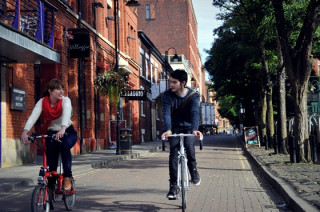We can learn from countries which have much higher levels of cycling than Britain currently has. The key lesson from both Dutch and Danish models is that a large part of their success is down to the infrastructure planning policies adopted in those countries which establish the requirement to consider the needs of cyclists. Both justify this approach due to the significant health and environmental benefits of cycling for short journeys.
In both the Netherlands and Denmark, they have prioritised cycling. This has been a key national strategy, which has filtered down to local strategies which has caused financial investment to follow. Both were in a similar position to the UK with declining levels of cycling from the 1960s to 1980s, to levels as low as 9% modal share, due to the rising popularity of cars. However, both the Netherlands and Denmark then adopted pro-cycling policies so that they were prioritised in ongoing transport development rather than continuing to prioritise cars. This resulted in cycling levels rising again in both countries where the modal shares are 27% in the Netherlands and 40% in Denmark, compared with 1% in the UK. Adopting pro-cycling strategies which are integrated into transport, health, safety and other policies across government ensured a co-ordinated approach which prioritised cycling across a number of government departments. Locally, the city of Copenhagen publishes biannual Bicycle Accounts which provide key targets, outcomes, issues and development opportunities. Amsterdam has a similar document. This provides political leadership, commitment and accountability.
That’s why we are calling on the government to make a policy commitment that all future road and other major transport schemes should be subject to a Cycle Safety Assessment prior to approval in the same way that all government policies and spending are subject to an Economic Impact Assessment. The Shadow Transport Second Maria Eagle has already committed to this and Transport Minister, Norman Baker, has said he will look into it.

In a report by the Scottish Government, Civilising the Streets, which looks at 13 different cities across Europe which have increased cycling rates the evidence is clear that either political cycling activism or strong political leadership, and in many cases both, were required to initiate a change to pro-cycling policies. The key finding of the report was that strong, local, political will with a long term strategy was the most important in developing increases in cycling participation.
Lessons can also be learnt from cities such as Montreal in Canada where they have widespread segregated cycle routes which link people’s homes to their work, education, shops, recreation areas and green spaces. In Montreal they have an extensive part-segregated, well signed, well understood, enforced cycle ways which cover most of the city and connect people with places of work, education, play and shopping.
Montreal undertook a variety of road safety awareness campaigns and this combined with the cycling improvements resulted in a reduction from 5 to 2 cycling deaths from 2006 to 2008, a 25% decrease in pedestrian deaths and a 28% reduction in serious injury on the roads despite a significant increase in cycling.
We continue to be involved in understanding international best practice through organisations such as Copenhagenize, the Cycling Embassy of Denmark and the European Cyclists Federation as well as continuing to monitor how governments are developing cycle plans and schemes. It is why we also support London Cycling Campaign’s Love London Go Dutch campaign, and hope to see it adopted across the country, beyond London.
Related News
18/12/2012 - British Cycling member support helps influence crucial EU Transport Infrastructure vote












